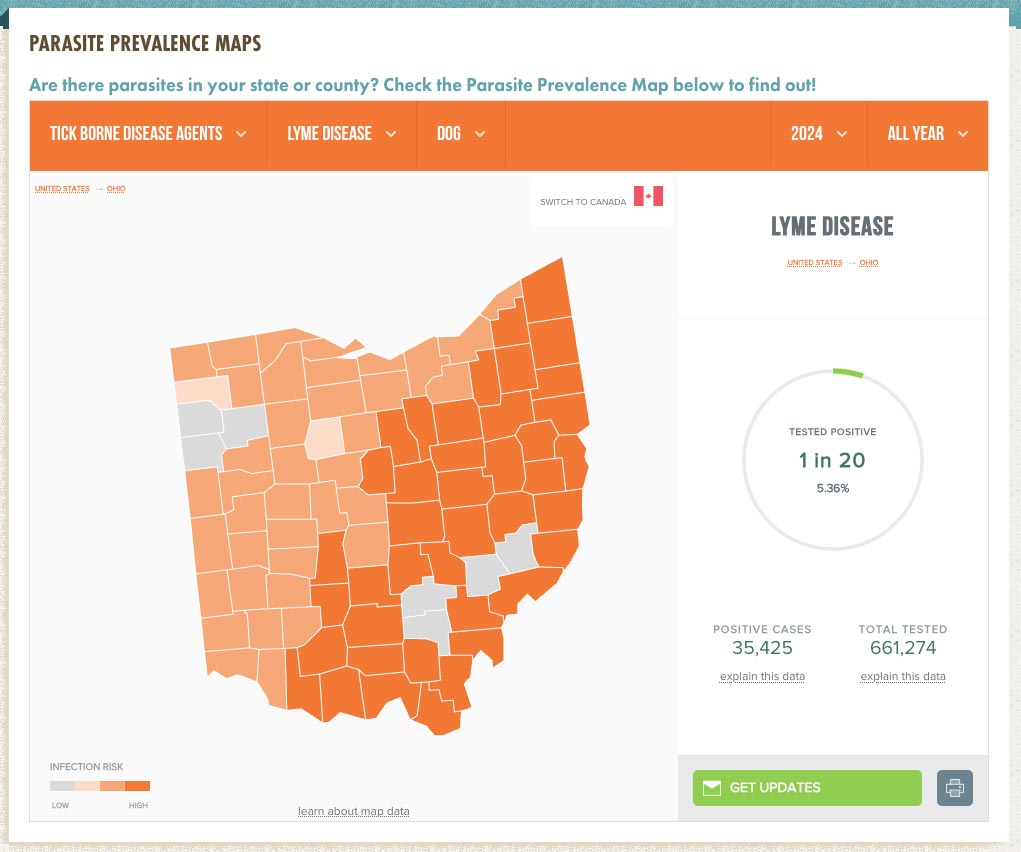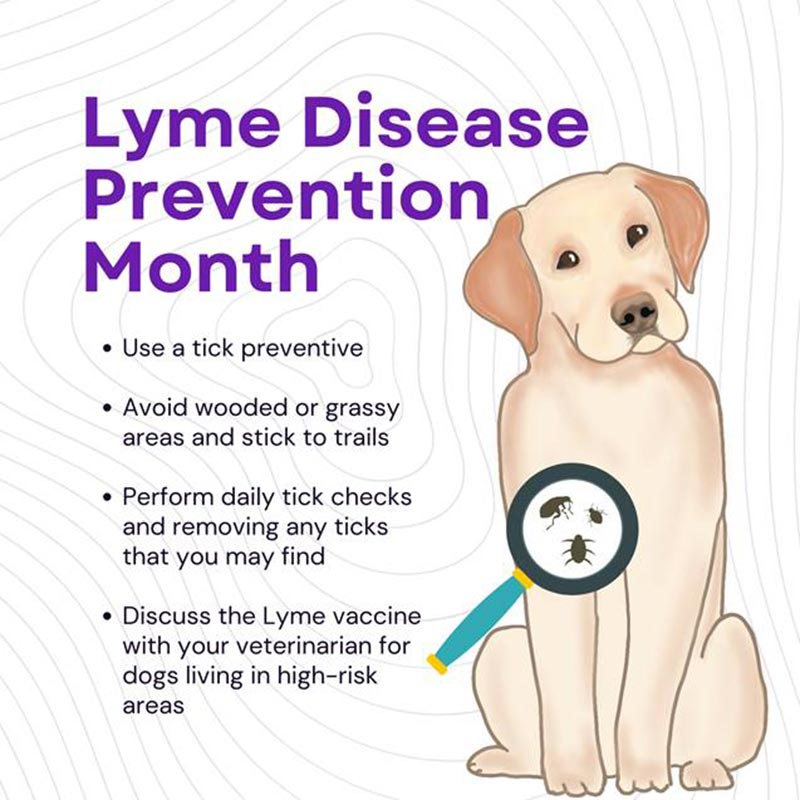Lyme Disease Prevention Month: What Pet Owners Should Know

Ohio is Higher-Risk for Lyme Disease Infections in Dogs
We’re so happy for spring and the upcoming summer! It’s wonderful to spend more time outside with our pets. To protect the health of both the humans and dogs in your life, it’s important to understand the risks of Lyme disease, especially in Ohio.
During Lyme Disease Prevention Month, we’ll highlight this increasingly-common parasitic infection, along with simple prevention steps.
What is Lyme Disease?
Lyme disease is a parasitic infection spread by certain ticks, such as deer ticks. When an affected tick bites a human or dog, the borrelia bacteria can enter the host. For humans, it can take three to 30 days for the first symptoms to appear, and they might be mistaken for a different illness. Stage two symptoms appear within three to 10 weeks after the tick bite. For dogs, symptoms may take two to five months to show up. This lag time in symptoms can make diagnosis difficult, so prevention is key.
It's important to know that humans and dogs cannot spread Lyme disease to each other.
By the Numbers: Lyme Disease in the Cincinnati TriState Area
The Companion Animal Parasite Council (CAPC) is a valuable resource for understanding Lyme disease in dogs. CAPC tracks the prevalence of parasitic disease in US and Canada pets going back to 2012. Using laboratory reporting data, it publishes helpful prevalence maps at a national, state and county level. Here’s the 2024 map for Lyme disease in Ohio dogs.

Our Southwest Ohio counties specifically saw:
- 792 positive cases in Clermont County
- 759 positive cases in Hamilton County
- 251 positive cases in Butler County
- 162 positive cases in Warren County
Let’s compare Ohio to neighboring states Indiana and Kentucky.
2024 Reported Lyme Disease Cases in Dogs
| Total Tested | Positive Cases | Percent Positive | |
|---|---|---|---|
| Ohio | 661,274 | 35,425 | 5.36% |
| Indiana | 336,907 | 15,867 | 4.71% |
| Kentucky | 173,129 | 7,452 | 4.30% |
We can see that Ohio pets are at a higher risk for Lyme disease. More dogs are tested, and a higher number of those cases are found to be positive. That results in our state having more than double the positive cases of Indiana and Kentucky.
And although it’s early in the year, Ohio has already seen over 13,000 Lyme disease cases in dogs from January to April 2025. Clermont County’s status has changed to High Risk, with 5.81% of tested dogs being positive for Lyme disease.
You Can Protect Your Dog from Lyme Disease
There are important and simple steps you can take to protect your dog from Lyme disease.

Ask your veterinarian about the best preventive medication for your dog. Some cover flea-only, flea-and-tick, flea-and-heartworm or all three. In our area, tick protection is very important. Watch Nancy’s video on Flea and Tick Meds for Dogs and Cats.
Can Cats Get Lyme Disease?
Cornell Feling Health Center published an article titled, “Lyme Disease: A Potential, But Unlikely, Problem for Cats.” It opens:
“Lyme disease is probably not a concern for cat owners. Although the bacteria that cause Lyme disease is capable of infecting cats, the disease has never been seen in a cat outside of a laboratory setting. However, because Lyme is potentially quite severe and is common among humans and dogs, it is wise to know how the disease is transmitted and what the signs of infection are in your pets.”
If you’re concerned that your cat may be at risk for Lyme disease, talk to your veterinarian, for instance, if your cat often spends time outdoors in wooded or meadow areas.
We hope this information has helped you understand the risks of Lyme disease for Ohio dogs. Contact us if you have any questions or concerns about your pet.

